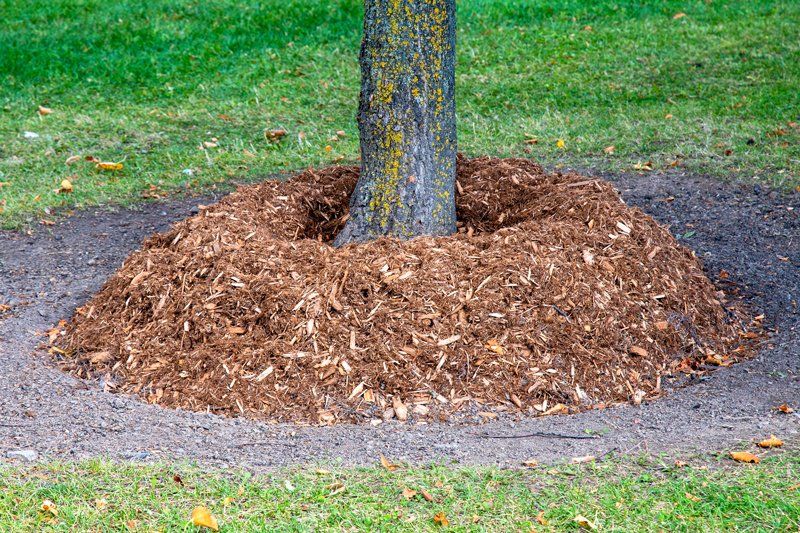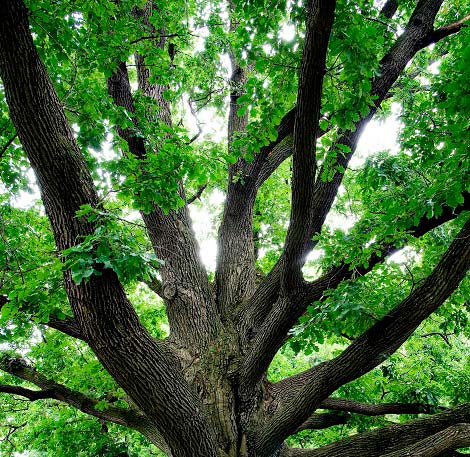Signs of Potentially Hazardous Trees
Trees can be hazardous due to potential tree failure, falling branches, invasive root systems, and electrical hazards. Storms, disease, decay, or structural weaknesses can also cause trees or branches to fall, leading to property damage and injury. Explore common signs that your tree is a safety hazard.
Large Cracks
Large cracks in a tree can indicate a hazardous condition that requires attention. These cracks are often a result of unnatural stress exerted on the tree, either vertically or horizontally. Cracks compromise the structural integrity of the tree, increasing the risk of failure. If you hang a swing or any heavy object from a branch or the trunk, you can create additional stress, exacerbating the situation.
The most concerning cracks are those on one of the primary branches or the trunk, as they are critical for stability. These cracks weaken the tree's ability to withstand external forces, such as strong winds or heavy loads, and can eventually lead to branch or tree failure.
Noticeable Lean
Leaning trees are susceptible to blowdown, which refers to the toppling or uprooting of a tree due to strong winds or storms. Trees with a lean are more likely to succumb to wind pressure.
Even a slight lean can indicate underlying structural issues. It may suggest that the tree has weakened or compromised roots, decay in the trunk, or damage to its structural integrity. Over time, these issues can worsen, making the tree more hazardous.
Trees have a natural response mechanism called reaction wood, which helps them compensate for gravitational forces. When a tree leans, it offsets the imbalance. However, this compensatory growth is not always sufficient, and the tree may remain at risk.
Dead Limbs
During the spring and summer seasons, when healthy trees are in full foliage, dead limbs stand out prominently. Spotting dead branches is crucial, as they pose a significant risk of falling during storms or strong winds, potentially causing property damage or endangering people.
Additionally, dead limbs can signal that the tree is suffering from a disease or infestation, which weakens the tree's overall structure and stability. These diseased branches may lose their strength, making them prone to breakage. Therefore, regularly inspect trees and promptly address any dead limbs to ensure the safety of both property and individuals. Taking appropriate action, such as pruning or removal, will mitigate the potential hazards associated with dead limbs.
Changes in the Bark of a Tree
Split or broken bark, especially in a V formation, suggests structural weakness and potential instability. Improper pruning techniques can result in bark damage and create entry points for pests and diseases. Discolored bark or peeling bark may indicate fungal or bacterial infections, which can further weaken the tree.
These changes in the bark serve as warning signs that the tree's health and structural integrity are in danger. Take prompt action to prevent potential hazards, such as limb failure or complete tree collapse, which can cause property damage or harm individuals nearby.
Irregular Crown Shape
When a tree's branches grow sideways or too many branches concentrate in one area, the tree's balance and stability suffer. The crown, which refers to the upper part of the tree comprising its branches and foliage, plays a crucial role in maintaining the tree's structural integrity.
An irregular crown shape often suggests that the tree is under stress or has structural issues. Such can potentially compromise the tree's ability to withstand external forces such as strong winds or heavy loads.
McClain's Tree Experts is a team of skilled professionals ready to provide top-notch tree care services tailored to your specific needs. We have the expertise to ensure your trees' well-being and your property's safety. Don't wait for tree-related disasters to strike—contact us now.
LOCATION
BUSINESS HOURS
Seven Days a Week: 8:00 am - 5:00 pm
24-Hour Emergency Service




